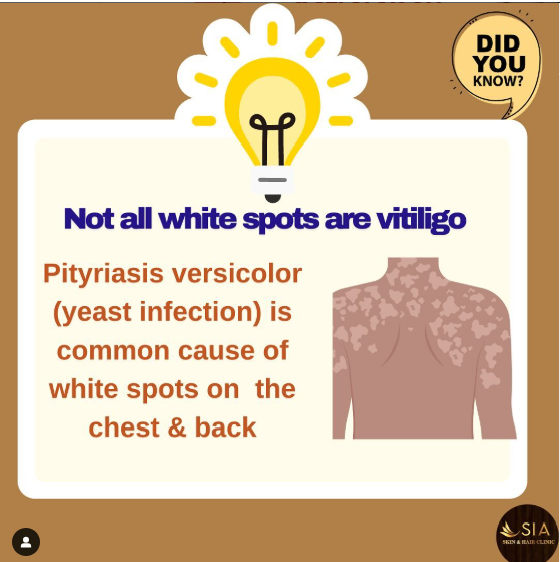
Noticing white patches on your chest or back can be alarming, and many people fear the worst—vitiligo. However, not all white spots indicate this condition. A common yet often misunderstood cause is pityriasis versicolor, a mild fungal infection that affects the skin’s pigmentation. Understanding the difference is crucial for proper treatment.
What Causes Pityriasis Versicolor?
Our skin naturally harbors yeast, but in some cases, it overgrows and disrupts normal melanin production, leading to uneven skin tone. Factors such as humidity, excessive sweating, weakened immunity, or oily skin can trigger this imbalance. While it’s not contagious, it can spread across larger areas if left untreated.
How to Identify It?
Pityriasis versicolor appears as small, scaly, white, pink, or brown patches, commonly on the chest, back, and shoulders. Unlike vitiligo, these spots may be slightly itchy and become more noticeable after sun exposure due to their inability to tan.
Treatment & Management
Thankfully, this condition is treatable. Antifungal creams, medicated shampoos, or oral antifungal medication can help restore skin pigmentation. Maintaining proper hygiene, wearing breathable fabrics, and avoiding excessive sweating can also prevent recurrence.
Final Thoughts
If you’re noticing persistent white spots, consulting a dermatologist is the best course of action. A proper diagnosis ensures that the right treatment is given, easing worries and restoring skin health effectively.

